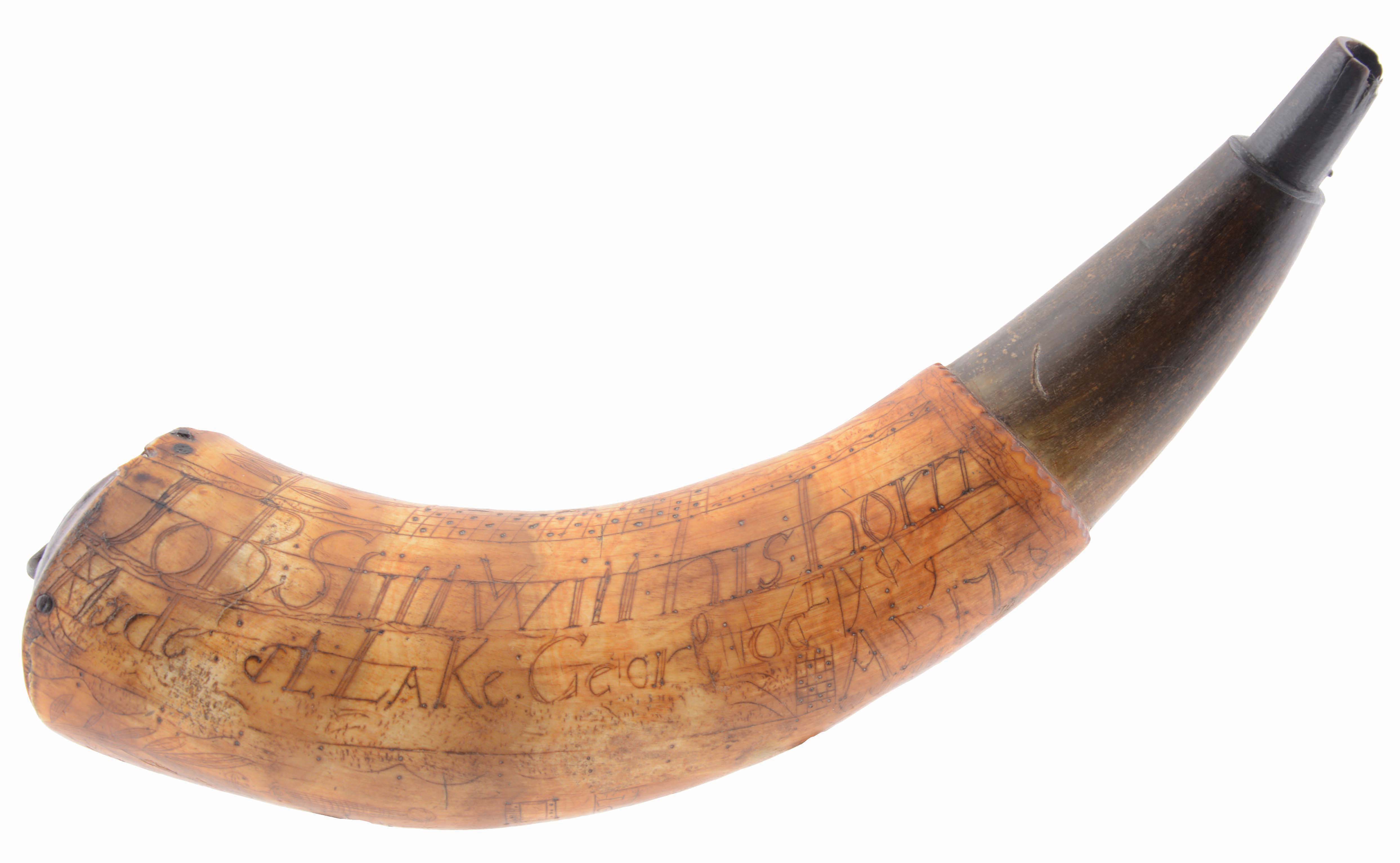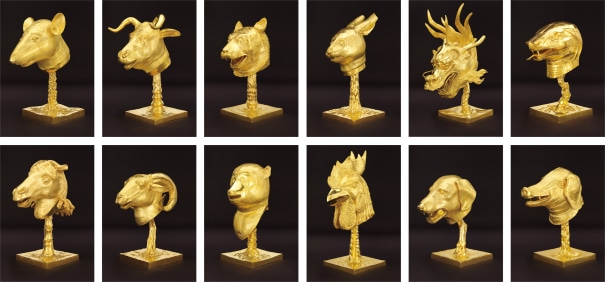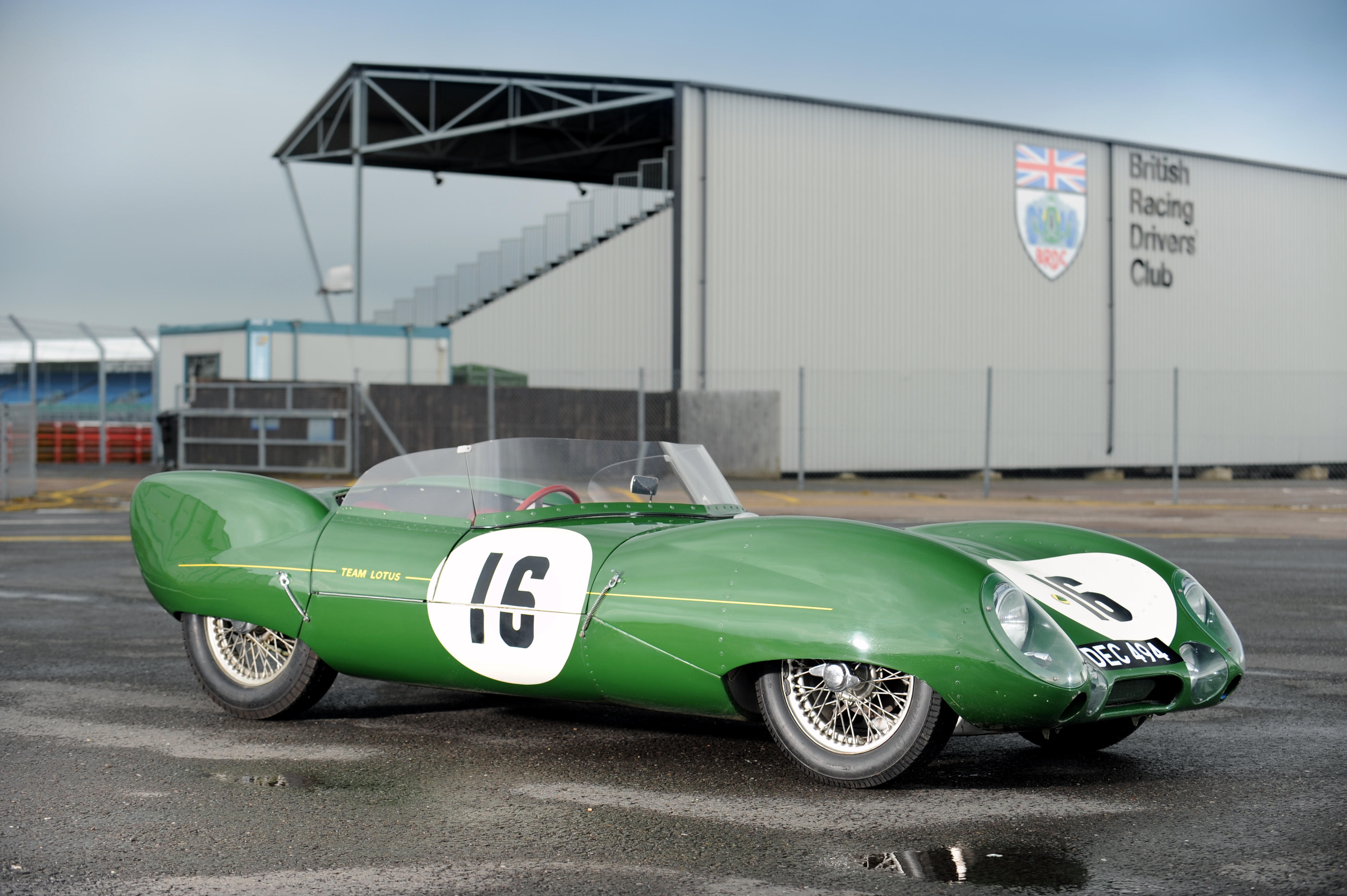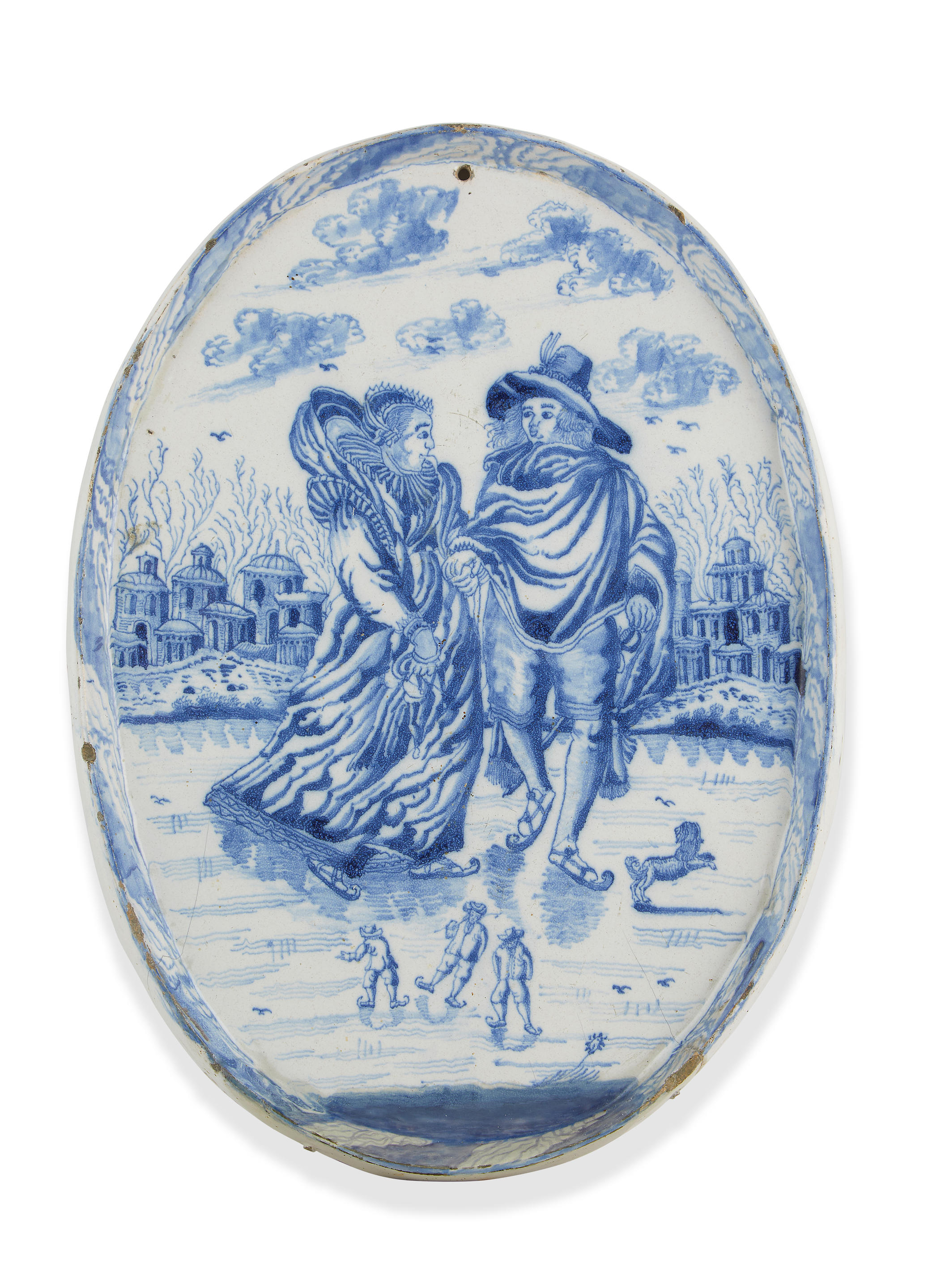Important and Historic Dog Head Pommel American Silver-Hilted Cuttoe with Provenance of Revolutionary War Brigadier Jotham Moulton Unmarked silver hilt attributed to maker Ephraim Brasher with doorknob style capstan and spiral channeled turned ivory grip stained deep green; well executed hound's head pommel with finely detailed eyebrows, muzzle, teeth and folded ears; double link silver chain guard passing from a ring in the dog's teeth to a ring at rear of oval floating guard; smooth sided gently elliptical four-slotted silver counter guard finely engraved on uppermost and underside, the top with both shell and foliate motifs on the quillons; diagonally-ridged ferrule above guard; single-edged slightly curved blade decorated with etched foliate scrolls and sprays with monogram GR; full length fuller with secondary narrow fuller running to a false edge; period scabbard of leather over wood with brass chape and silver locket with ruffled bottom edge bearing the initials JM for Jotham Moulton on one side and inscribed J Colcord on the other. Hilt measures 5 7/16 inches and blade 27 inches. Provenance by descent: Brigadier General Jotham Moulton (1743-1777) Dr. Jotham Moulton (1771-1857) Jotham Tilden Moulton to nephew Alfred Frederick Adams Ella Adams to nephew Dana Whiting Norm Flayderman by private purchase Present owner by private purchase American Silver-Hilted Swords and the elusive Dog Head Pommel The present lot is one of only 8 known examples of the style Any in depth survey of colonial and early Federal antiques would be sorely remiss in not paying particular attention to the craftsmanship exhibited by the makers of American silver hilts during those years. For just over a century, from roughly 1700 to 1815, American silversmiths produced not only the more familiar tableware and ornaments, but silver mounted swords that represented some of the finest silverwork in any field. Far from standard issue, these officers' sabers were uniquely crafted, often made by specific request and with an elegance of design and execution that remains unsurpassed for American swords from any period and that places these arms firmly in the realm of the best of the young nation's decorative arts. No American silver hilts are known prior to 1700 and by the first quarter of the 19th century tastes had changed to the often overwrought rococo, with swords displaying more of the jeweler's ornamentation than the previous purity of the silversmith's art. In the middle of the 20th century, scholar Harold Peterson and a select group of distinguished collectors began to study closely American silver hilts and pommels. A 1955 exhibition, The Sword in America 1000-1954 featured within its broad parameters the first significant group of American silver hilts to ever be displayed, indeed therein was the majority of known examples of this silver work, a mere 80 swords. Nevertheless, this Corcoran Gallery exhibition spurred new collectors to seek other examples of this underappreciated American art and the intervening 50 years have seen the number of identified silver hilts climb steadily. Yet, they remain far from common, with, as in any field of merit, the best examples especially scarce, so that the appearance on the market of a sword with the combination of intrinsic beauty, notable maker and historic provenance such as the present lot is worthy of careful interest. While silver hilts are found in a range of styles from the crude to the detailed, plain to the finely wrought and atop small swords, hunting swords and sabers, the animal figure pommels are among the most sought after and desirable. Of these there are three types, the lion head, commonly found dated up to and throughout the Revolutionary War, the eagle pommel, of the Federal period and finally the dog or hound head, which falls into the earlier period. The dog head has always been the rarest of the three types; at the time of the 1955 exhibition mentioned above, only 2 examples of true dog
Important and Historic Dog Head Pommel American Silver-Hilted Cuttoe with Provenance of Revolutionary War Brigadier Jotham Moulton Unmarked silver hilt attributed to maker Ephraim Brasher with doorknob style capstan and spiral channeled turned ivory grip stained deep green; well executed hound's head pommel with finely detailed eyebrows, muzzle, teeth and folded ears; double link silver chain guard passing from a ring in the dog's teeth to a ring at rear of oval floating guard; smooth sided gently elliptical four-slotted silver counter guard finely engraved on uppermost and underside, the top with both shell and foliate motifs on the quillons; diagonally-ridged ferrule above guard; single-edged slightly curved blade decorated with etched foliate scrolls and sprays with monogram GR; full length fuller with secondary narrow fuller running to a false edge; period scabbard of leather over wood with brass chape and silver locket with ruffled bottom edge bearing the initials JM for Jotham Moulton on one side and inscribed J Colcord on the other. Hilt measures 5 7/16 inches and blade 27 inches. Provenance by descent: Brigadier General Jotham Moulton (1743-1777) Dr. Jotham Moulton (1771-1857) Jotham Tilden Moulton to nephew Alfred Frederick Adams Ella Adams to nephew Dana Whiting Norm Flayderman by private purchase Present owner by private purchase American Silver-Hilted Swords and the elusive Dog Head Pommel The present lot is one of only 8 known examples of the style Any in depth survey of colonial and early Federal antiques would be sorely remiss in not paying particular attention to the craftsmanship exhibited by the makers of American silver hilts during those years. For just over a century, from roughly 1700 to 1815, American silversmiths produced not only the more familiar tableware and ornaments, but silver mounted swords that represented some of the finest silverwork in any field. Far from standard issue, these officers' sabers were uniquely crafted, often made by specific request and with an elegance of design and execution that remains unsurpassed for American swords from any period and that places these arms firmly in the realm of the best of the young nation's decorative arts. No American silver hilts are known prior to 1700 and by the first quarter of the 19th century tastes had changed to the often overwrought rococo, with swords displaying more of the jeweler's ornamentation than the previous purity of the silversmith's art. In the middle of the 20th century, scholar Harold Peterson and a select group of distinguished collectors began to study closely American silver hilts and pommels. A 1955 exhibition, The Sword in America 1000-1954 featured within its broad parameters the first significant group of American silver hilts to ever be displayed, indeed therein was the majority of known examples of this silver work, a mere 80 swords. Nevertheless, this Corcoran Gallery exhibition spurred new collectors to seek other examples of this underappreciated American art and the intervening 50 years have seen the number of identified silver hilts climb steadily. Yet, they remain far from common, with, as in any field of merit, the best examples especially scarce, so that the appearance on the market of a sword with the combination of intrinsic beauty, notable maker and historic provenance such as the present lot is worthy of careful interest. While silver hilts are found in a range of styles from the crude to the detailed, plain to the finely wrought and atop small swords, hunting swords and sabers, the animal figure pommels are among the most sought after and desirable. Of these there are three types, the lion head, commonly found dated up to and throughout the Revolutionary War, the eagle pommel, of the Federal period and finally the dog or hound head, which falls into the earlier period. The dog head has always been the rarest of the three types; at the time of the 1955 exhibition mentioned above, only 2 examples of true dog














Try LotSearch and its premium features for 7 days - without any costs!
Be notified automatically about new items in upcoming auctions.
Create an alert